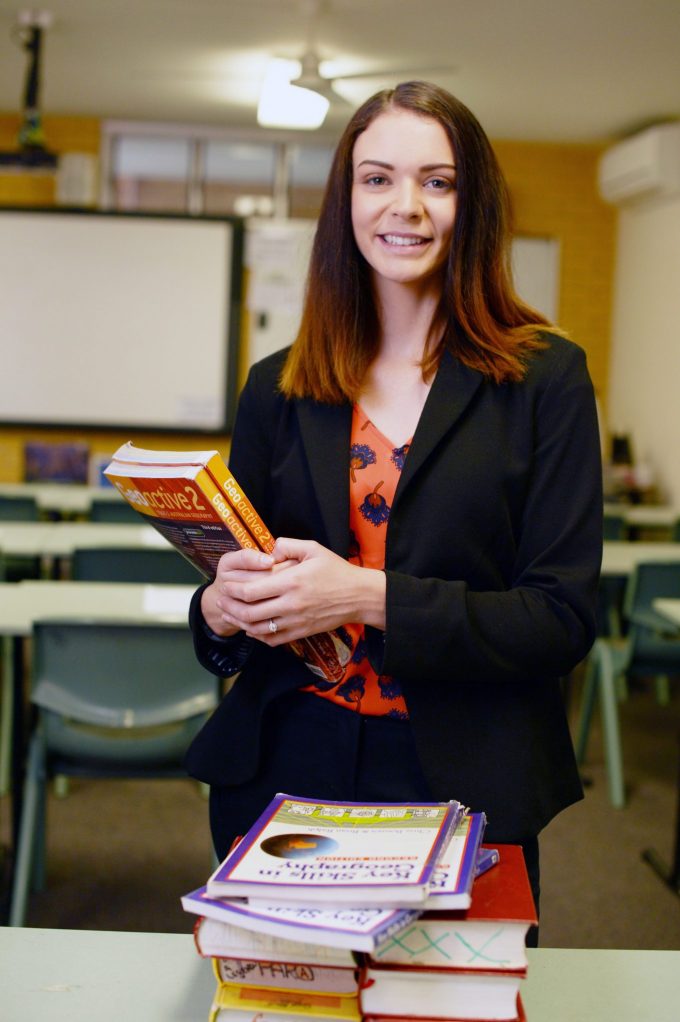Keeping your cool improves student comprehension

The temperature of a classroom has a direct impact on the brain’s ability to learn.
ALTHOUGH air conditioning is now a standard feature in offices, cars and homes, it is remains a desired luxury that many schools are forced to do without.
Government funding for air conditioning is not provided to many schools, which instead have to budget or fundraise in order to cool or heat their classrooms.

Experts, however, point out the importance of room temperature to learning, with anywhere higher than 28 degrees considered detrimental to concentration.
University of the Sunshine Coast School of Education Associate Professor Michael Nagel says studies dating as far back as the 1930s have shown a link between classroom temperature and learning ability.
Nagel claims the human brain is extremely heat sensitive, which directly impacts cognition.
“It is significant to note that there is not a great deal of new research in this field as it is widely accepted that heat is bad for cognition and learning and as such new studies aren’t warranted,” says Prof Nagel.
Studies over the years have made findings such as:
*Heat stress dramatically lowers scores in intellectual and physical tasks (Taylor, H.L. and Orlansky, J. (1993).
*Reading comprehension declines when the ambient temperature of a room reaches 23
degrees Celsius. Math skills decline above 25 degrees Celsius.
Lackney, J. (1994)

* Classrooms kept between 20 and 23 degrees Celsius are the most comfortable for students.
Harner, D.P. (1974)
The consideration for schools is therefore whether the outlay of dollars is worth the trade-off in creating pleasant learning environments with at least one less distraction.
Schools that invest in air conditioning must also ensure their spend is worthwhile in the long run, selecting appropriate systems, developing a precise maintenance program and finding the best ways to cut energy costs.
Industry opinion
Mitsubishi Electric senior product support engineer Ari Grimekis says wall-hung split system air conditioning is by far the most popular with schools purely because of price.
“They are the cheapest form of air-conditioning you can get and you just put them on the wall in the classroom, connect your piping and wiring and that’s it.
“The next option is a ducted system where you have a sealed unit in the ceiling but they can cost about 50 percent more and are more involved to install.
“Ducted systems have much better filters, a longer lifespan and better maintenance.
“But the trend is for split systems and that is cost driven.”
Daikin national product manager
Raj Singh says air conditioners
varied in size and power.
“The one that’s just right for each application depends on how big or small the space is, the number of classrooms that need to be air conditioned and many other factors,” says Raj.
“Choose an air conditioner that’s appropriate for the classroom size and it will operate much more efficiently. If it’s oversized, it will waste energy, while an undersized model will strain to maintain its temperatures and wear out a lot sooner.”
Other factors to consider include:
*Classroom size – The larger the area and student population, the higher the air conditioner capacity required.
* Insulation – The better the insulation in the walls and ceiling of the room, the lower the air conditioner capacity required.
* Window size – The size of your window and insulating properties of the glass will have a greater effect on the size of the air conditioner than the walls and ceilings of the room. Having larger windows in a room may mean a larger capacity system due to the higher solar gains into the space.
* Aspect – Rooms that are facing east or west may need a different capacity air conditioner compared to a north facing room.
* Climate – Schools built near the coast will require different capacity air conditioners compared to inland suburbs or cities due to
Maintenance
A badly maintained air conditioning system may only last half as long as it should, warns Ari from Mitsubishi.
Once a system is purchased, schools should enforce a diligent maintenance program undertaken by staff or contractors who know what they are doing.
Ari suggests seeking staff training from your air conditioning supplier which is often free of charge.
“Maintenance involves cleaning and taking out filters to wash, checking the heat exchange and fan barrel to ensure they are not clogged with dust.
“If filters are not cleaned, the dust pulls through the filters and clogs the unit and in some cases the systems can’t be salvaged.
“Keeping it clean should be a priority because keeping it clean goes hand in hand with energy efficiency and the life of the product.
“I recommend maintaining your system every month. Train your maintenance staff so they know what’s required or if you use contractors, ensure the contractors are trained.
“Proper maintenance could make the difference between your system lasting ten years or five years.”
Daikin’s Raj Singh recommends a monthly clean. Domestic air conditioners are recommended for cleans at the start of every season but because school systems are used almost every day, Raj advises monthly maintenance.
“If the filters are clogged, this can reduce airflow across the coil and hence impact on the cooling and heating capacity delivered into the occupied space and also increase operating costs.”
Energy efficiency
If your school is going to the expense of purchasing air conditioning then it is important to consider the long-term cost of power.
Ari says modern products are much more efficient than their predecessors which is why he recommends updating anything older than ten years.
“A new system will have about half the energy consumption of an old air conditioning unit so it is worth looking at replacing them purely on cost savings,” he says.
The difference between modern entry-level products and their high-end counterparts when it comes to energy efficiency is not as much as it was in the past.
“The cheaper models are closing the gap with higher priced versions,” he says.
Daikin’s Raj Singh recommends using the Energy Rating Label – which ranks products from one start to 10 stars – as a starting point to select an efficient system.
“The bar is set very high by the government, ensuring that air-conditioners sold in Australia are amongst the most energy efficient globally.”
System controls
Energy efficiency goes hand-in-hand with new Smart Controls that enable schools to set usage parameters.
“You can do a lot to reduce the energy costs of the school by using the Smart wall controllers,” says Ari.
“These controllers give flexibility to set programs on how you want your air conditioning systems to be used so they are not using power when they are not needed.
“You can lock the range of the temperature, you can set the hours in which they can be used.
“You can have them running on timers so they automatically switch off.
“We have some schools that use a motion sensor on our wall controller that detects movement and body heat so they know when to turn on if a room is occupied and turn off when it isn’t.
“Teachers can just walk into a room and not have to do anything.”
Temperature
Many variables come into play when deciding the best temperature for a classroom and people will always have their differences.
But Ari is adamant that energy savings should not be the key consideration for setting the climate of a room.
Anywhere between 22 degrees and 24 degrees is okay. You hear schools talking about 26 degrees to save energy but you will find that is too warm.
“I think the temperature has to be kept as close to 23 degrees as possible.
“It’s a learning environment and students should be comfortable and you shouldn’t be sacrificing comfort for energy.
“You should look at other energy saving measures such as high unit efficiency, not temperature.”
Daikin’s Raj Singh says it’s important that students and teachers are neither too hot or too cold.







